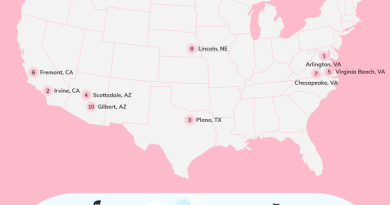What To Have In Your Generator Installation Checklist
Permanent faults, brownouts, and blackouts are some power outages that can cause disaster to your business or home. They can also make your work stall and prevent appliances that keep people safe when there are intense frigidity and heat from functioning. Deciding to buy a generator is a great idea – find out more.
However, it would be best if you had an installation checklist to ensure you successfully install it. This article highlights what you need to include in your checklist.
1. Hiring An Installer
All machines require professionals to do an installation, and generators are no different. Fortunately, some manufacturers will offer you an installer when you buy a generator from their company. If you’re this lucky, your installation process may be smooth. However, if you buy a generator from a vendor that doesn’t offer such professionals, you need to think about hiring an installer.
Good installers should have relevant licenses and permits. Don’t settle for local merchants and plumbers just because they’re cheap, but ensure you do a background check on your ideal candidate to determine their expertise and experience. That may require you to craft a budget for paying the professionals. Before settling on your perfect candidate, ensure you compare prices to get better deals.
2. Choosing A Location
Every state has rules outlining where a generator should be located because of safety reasons. Ensure your preferred location is accessible, code-compliant, away from water sources, doors and windows, near electrical hook-ups and fuel sources, and out of utility paths. It should also be an area that complies with your neighborhood and homeowner’s association regulations.
Because the generator must be linked to a transfer switch to prevent it from back-feeding power into the grid, its location should be accessible to your home’s wiring. Furthermore, the installation checklist should also have your preferred location of storing fuel – this could be a delivery pipeline. If your fuel source is closer to the generator, you’ll spend less money. However, ensure you comply with the local regulations concerning fuel storage.
3. Applying For Permits
Before finally installing your generator, you need to receive various permits from your state or insurance company. It’s advisable to find a generator dealer or installer to help you process the permits. Permits will vary from state to state, depending on regulations. But all states require you to have homeowner’s insurance that covers the generator.
4. Pouring A Concrete Slab
You should place your generator on a concrete pad to keep it safe from rising water levels and harsh weather conditions. It may be difficult to set up the slab on your own, and you may need to hire a professional to do the work for you. Ensure you have a budget for that.
5.Connecting The Generator
Once you set up a concrete pad, you can install your generator on it and connect it to the fuel source and transfer switch. Let your electrician or installer do these tasks for you. Once your generator is connected, enclose it and clear the debris around it to prevent rodents and cold weather from affecting it. Do a final inspection to confirm the fuel levels and connections are intact.
Conclusion
Having a generator installation checklist can help to prevent things from going south. You can use this step to create a simple checklist.




